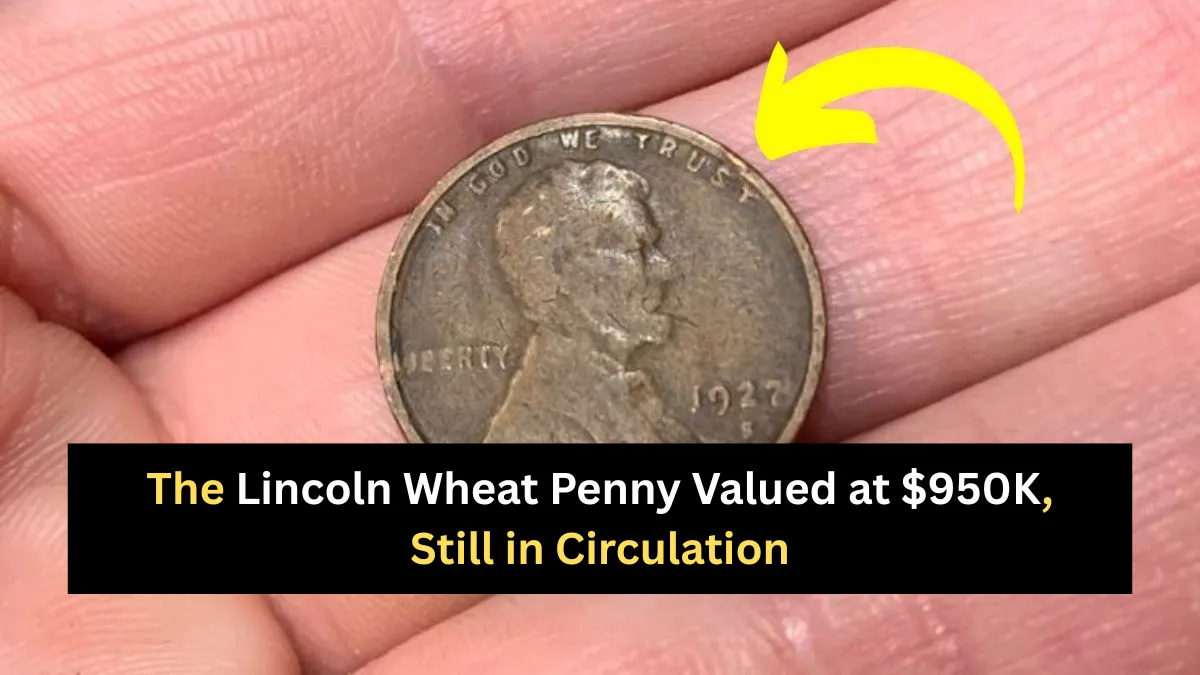The Lincoln Wheat Penny has long been a staple in American coinage, but many don’t realize that a select few of these coins have grown to be highly valuable collectibles. Among them is a rare Wheat Penny that could be worth a staggering $950,000.
You may be wondering, how is it possible for a seemingly ordinary penny to be worth such an incredible sum? Let’s explore the rarity, history, and importance of this coin and what makes it so valuable, even though it could still be circulating today.
What Is a Lincoln Wheat Penny?
The Lincoln Wheat Penny was first issued by the U.S. Mint in 1909 to commemorate Abraham Lincoln’s 100th birthday. The obverse features a portrait of Lincoln designed by Victor David Brenner, while the reverse showcases two ears of wheat, giving the coin its distinctive name. These pennies were produced until 1958 when the Mint switched to the Lincoln Memorial design.
Though many of the Wheat Pennies are now common and only worth a few cents, certain rarities have emerged over the years, making them highly sought after by collectors.
The Rarest Lincoln Wheat Penny: The 1943 Copper Penny
The specific 1943 Copper Lincoln Wheat Penny is the key to the coin worth $950,000. This is one of the most famous and valuable error coins in U.S. history, and it’s still believed to be in circulation. While the U.S. Mint switched to producing steel pennies for the year 1943 due to wartime copper shortages, a few 1943 copper planchets mistakenly made it through the minting process.
These copper pennies are extraordinarily rare because the vast majority were made from steel. Only a few copper 1943 pennies exist, and they are considered extremely valuable.
Key Facts:
- Minting Error: The 1943 copper penny was a mistake during the copper shortage of WWII.
- How It Happened: 1943 was the year the U.S. switched to steel pennies, but a few of the copper planchets from 1942 were mistakenly used in the minting process.
- Extremely Rare: Only around 10 known specimens of the 1943 copper penny have been found.
Why Is the 1943 Copper Penny So Valuable?
The 1943 Copper Penny is worth an astronomical sum due to its rarity, error nature, and historical significance. The United States Mint produced millions of pennies in 1943, but the majority were made from steel due to wartime copper shortages. Since only a few were produced in copper, these error coins are considered among the rarest in existence.
The $950,000 value stems from its rarity and the fact that these coins are almost impossible to find. The last known sale of a 1943 copper penny was for $1.7 million in 2010, but some experts believe that certain well-preserved specimens could fetch nearly $2 million at auction.
Value Range:
- $100,000 to $950,000+ depending on the coin’s condition and provenance.
- A high-grade 1943 copper penny could be worth over $1 million in an auction setting.
How to Spot a Valuable 1943 Copper Penny
Finding a 1943 copper penny in your pocket change is extremely rare but not impossible. Here’s how you can identify if you’re holding one of these valuable coins:
- Date: The coin must be dated 1943. Check the date carefully to make sure it’s not a 1943 steel penny or another year.
- Color: Copper pennies have a distinctive reddish-brown color, while steel pennies are silver-gray.
- Magnet Test: Use a magnet to check if it’s made of steel—steel pennies will stick to a magnet. A 1943 copper penny will not.
- Condition: The condition of the coin can significantly affect its value. Mint state (uncirculated) examples are worth much more than those with visible wear.
Can You Still Find the 1943 Copper Penny in Circulation?
While the chances of finding a 1943 copper penny in circulation today are extremely slim, it’s not impossible. A few of these coins have been discovered in circulation in recent years—though they were typically found in small quantities or among old collections. Many coins that are still circulating may not be in mint condition, but even coins with wear and tear can still fetch significant sums.
In fact, some coin rolls purchased at banks have occasionally turned up rare varieties, including 1943 copper pennies, showing that while extremely unlikely, they’re not entirely gone from the public sphere.
Conclusion
The 1943 copper Lincoln Wheat Penny is a coin of legend—one that has captured the imagination of collectors and historians alike due to its rarity, historical significance, and the sheer fortune it can bring. Whether you find one in circulation or stumble upon one in your change jar, the discovery of a $950,000 penny could change your life in an instant.
For collectors and casual coin enthusiasts alike, the search for rare coins remains a thrilling pursuit. While finding such an error coin is incredibly rare, it’s always worth keeping a close eye on your pocket change because you never know when you might be holding the next great discovery.
FAQs
Q1: How can I tell if I have a rare 1943 copper penny?
Examine the date carefully, look for the copper color, and test the coin with a magnet. If it doesn’t stick, it could be a copper penny.
Q2: Are there other valuable Lincoln Wheat Pennies?
Yes! Some other rare Lincoln Wheat Pennies, like the 1914-D or 1922 no mint mark, are also highly valuable.
Q3: Should I clean a rare penny before selling it?
No! Cleaning a rare coin can reduce its value. Always leave the coin in its natural condition.
Q4: How do I get my rare coins appraised?
Consult with a professional coin dealer, or use grading services like PCGS or NGC to get an accurate evaluation.
